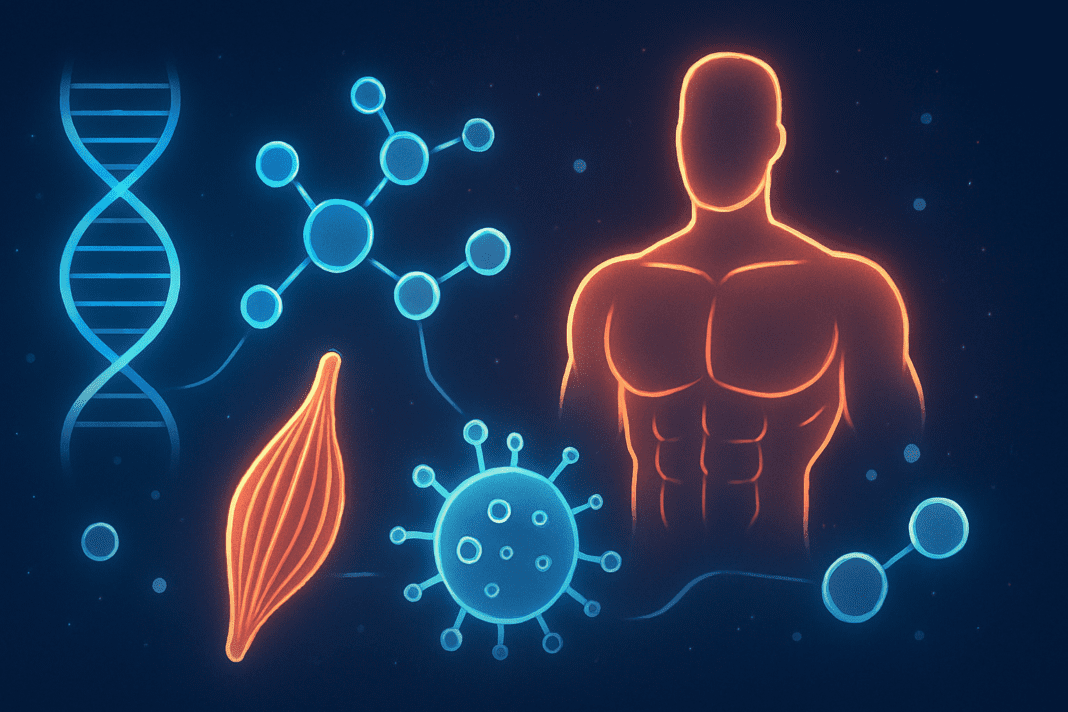Proteins are among the most vital macronutrients in human nutrition, playing foundational roles that support nearly every physiological function. Their importance stretches far beyond muscle building or sports performance, reaching into cellular repair, immune defense, hormone regulation, and metabolic health. For anyone serious about understanding how nutrition impacts overall wellness, answering the question, “Which of the following is a function of protein?” opens the door to exploring some of the most fascinating and intricate systems within the human body. This article unpacks the essential roles of proteins, grounded in medical science and nutritional expertise, and provides clear, evidence-based insights into why proteins matter for health, healing, and disease prevention.
You may also like: Macronutrients vs Micronutrients: What the Simple Definition of Macronutrients Reveals About Your Diet and Health

Understanding What Proteins Are and Why They Matter
At the molecular level, proteins are composed of long chains of amino acids, often referred to as the building blocks of life. These chains fold into complex three-dimensional structures that determine their function, whether as enzymes, antibodies, transporters, or signaling molecules. Each protein is encoded by a specific gene, and their roles are as diverse as their shapes. In the realm of nutrition and wellness, proteins are considered essential not only because they support tissue growth and repair, but also because they influence everything from enzyme production to immune system responsiveness.
When people wonder, “Which of the following is a role of proteins?” they are typically looking for answers about how these molecules support everyday bodily processes. In this context, proteins serve as catalysts for chemical reactions, scaffolding for cellular structures, carriers for nutrients and oxygen, and communicators for hormonal signals. The sheer range of their functionality explains why adequate protein intake is a cornerstone of every dietary recommendation, especially in medical nutrition therapy and preventative health care.
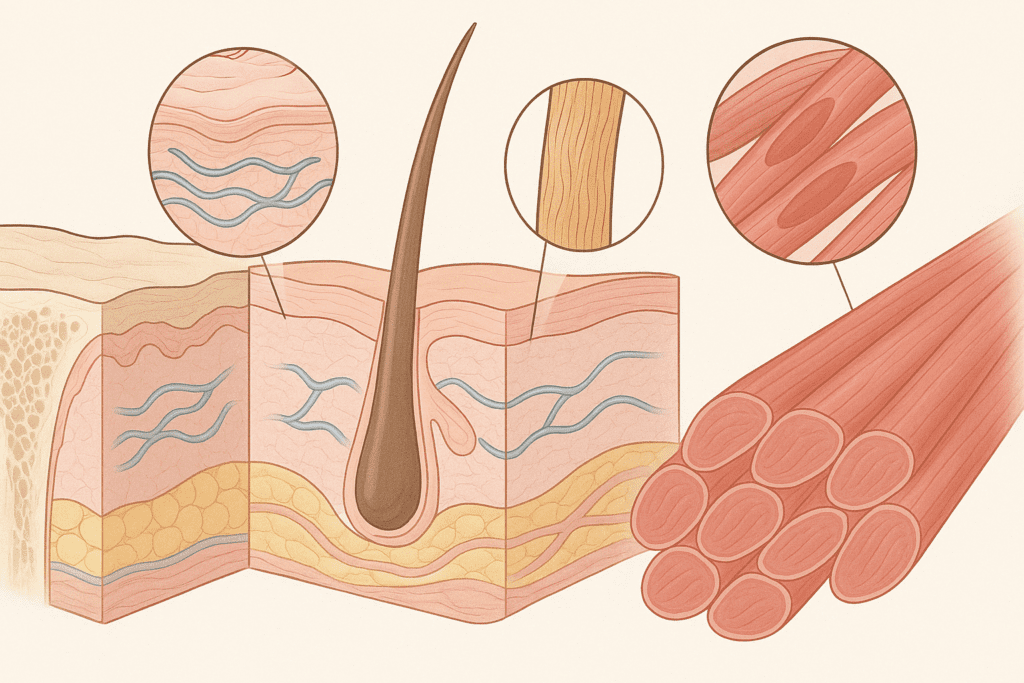
Protein as a Structural Foundation for the Human Body
One of the most prominent and observable functions of protein is its structural role in the body. Collagen, keratin, and elastin are all structural proteins that provide strength, elasticity, and integrity to tissues such as skin, tendons, ligaments, hair, and nails. Muscles are rich in protein-based filaments such as actin and myosin, which allow for movement through coordinated contraction and relaxation. Bones also rely on collagen as a matrix for calcium deposits, creating a resilient yet strong skeletal framework.
This structural function is often top of mind when individuals ask, “Which of the following is a function of protein?” because it is directly linked to physical form and strength. In cases of injury, surgery, or illness, the body requires increased protein intake to rebuild damaged tissues. In older adults, maintaining muscle mass is critical to preserving mobility and reducing fall risk, further emphasizing the preventative role of protein-rich diets. When we consider the broader question, “Select all that are functions of proteins,” structural integrity ranks as one of the most immediate and tangible answers.
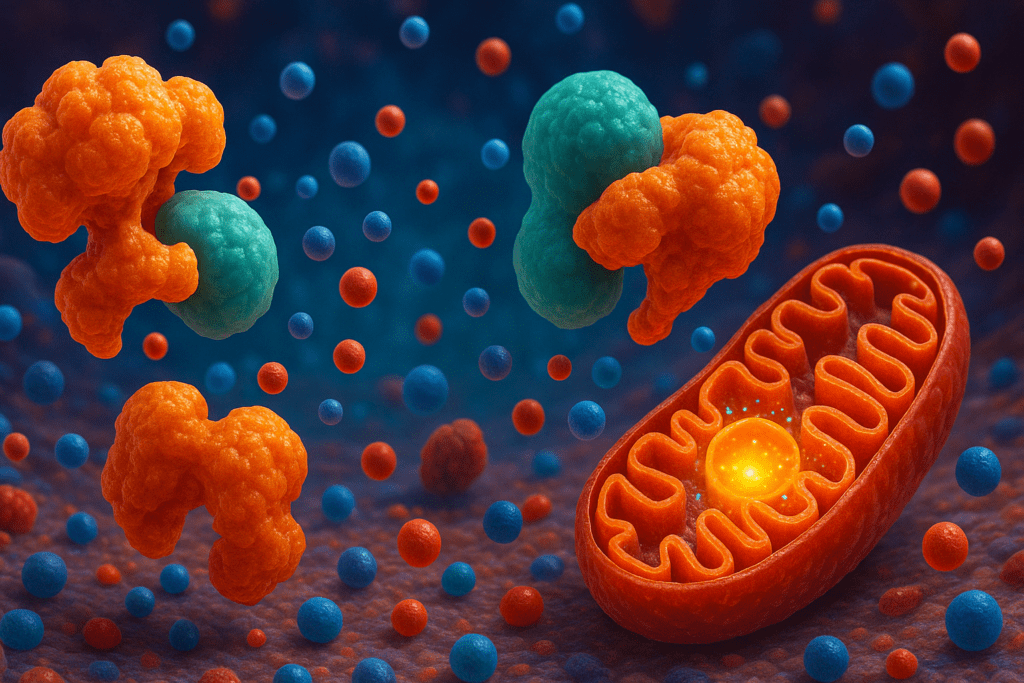
Enzymatic Activity: The Catalysts of Life
A less visible but equally critical function of protein is its role as enzymes, which are specialized proteins that catalyze biochemical reactions. These reactions include digestion, energy production, DNA replication, and detoxification processes in the liver. Without enzymes, most of the body’s chemical reactions would occur too slowly to sustain life. For instance, the enzyme amylase breaks down carbohydrates in the saliva, while pepsin helps digest proteins in the stomach.
This enzymatic function becomes essential in understanding the comprehensive response to the inquiry, “Which of the following is a role of proteins?” By facilitating nearly every chemical process in the body, enzymes allow for metabolic efficiency and cellular homeostasis. Moreover, medical conditions such as phenylketonuria and Tay-Sachs disease highlight what can happen when specific enzyme functions are impaired due to genetic mutations. Such examples deepen our appreciation for how proteins not only sustain wellness but also influence clinical outcomes.
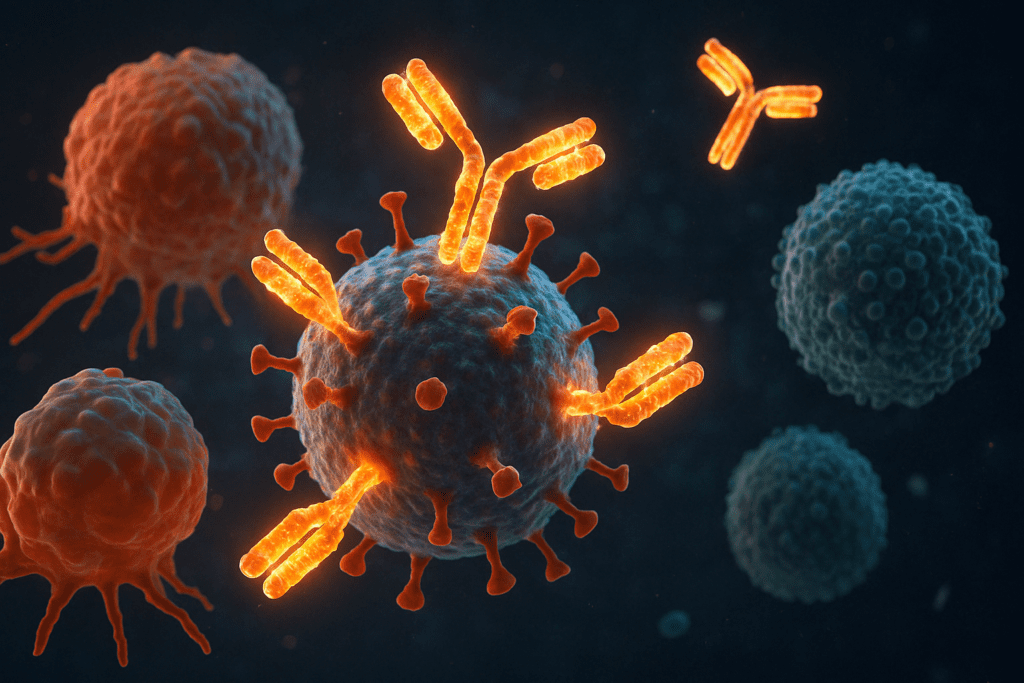
Proteins in Immune Defense and Disease Resistance
In the realm of immune function, proteins act as both defenders and signalers. Antibodies, which are specialized immune proteins, bind to foreign pathogens and flag them for destruction by other immune cells. This is the cornerstone of adaptive immunity and forms the basis for how vaccines work. Cytokines, another class of signaling proteins, mediate inflammatory responses and help coordinate immune activity across various systems in the body.
When people search for answers to, “Select all that are functions of proteins,” immune defense is often overlooked but crucial. Without adequate protein, the immune system becomes weakened, impairing the body’s ability to fight infections and recover from illness. In clinical settings, malnutrition characterized by protein deficiency—a condition known as kwashiorkor—is associated with immune suppression and increased vulnerability to disease. On the preventive side, consuming sufficient high-quality protein supports resilience against seasonal infections, chronic inflammation, and even autoimmune flare-ups.
Hormonal Regulation and Signal Transmission
Another key role of proteins is in the formation and function of hormones. While not all hormones are proteins, several major ones—including insulin, glucagon, growth hormone, and thyroid-stimulating hormone—are peptide-based and rely on amino acid sequences to function properly. These hormones regulate critical processes such as blood sugar balance, metabolic rate, growth, and reproductive cycles.
This signaling function of proteins provides another layer of understanding when answering, “Which of the following is a function of protein?” Beyond structural and enzymatic roles, proteins help orchestrate the endocrine system’s delicate hormonal symphony. For example, insulin is produced by the pancreas and enables cells to absorb glucose from the bloodstream. Without this protein-based hormone, as in the case of type 1 diabetes, metabolic chaos ensues. Thus, proteins are not only materials but messengers, crucial to internal communication and balance.

Transport and Storage of Vital Nutrients
Proteins also act as carriers, transporting essential substances throughout the body. Hemoglobin, a protein in red blood cells, carries oxygen from the lungs to tissues and organs. Myoglobin stores oxygen in muscle cells for immediate use during physical exertion. Albumin, another transport protein, carries hormones, drugs, and fatty acids in the blood, helping maintain osmotic pressure and preventing fluid leakage from blood vessels.
This transport function aligns naturally with the keyword phrase, “Select all that are functions of proteins,” because it highlights how proteins support circulation and nutrient distribution. Without transport proteins, critical molecules would not reach their destination, and cells would be unable to perform essential functions. In the context of nutrition, deficiencies in transport proteins can compromise oxygen delivery, disrupt hormonal balance, and impair detoxification. This function also illustrates how protein health intersects with cardiovascular, respiratory, and metabolic systems.
Protein in Energy Production and Metabolic Efficiency
While carbohydrates and fats are the body’s preferred energy sources, proteins can also be used for energy when needed, especially during prolonged fasting, illness, or low-calorie diets. Through a process called gluconeogenesis, the liver can convert amino acids into glucose to sustain vital functions. While this is not the most efficient or desirable use of protein, it becomes a survival mechanism under metabolic stress.
This metabolic role answers a less obvious part of the question, “Which of the following is a role of proteins?” Though not a primary energy source, protein contributes to energy homeostasis when other sources are scarce. However, this process comes with a trade-off: using protein for energy may compromise tissue repair and immune defense. Therefore, ensuring sufficient dietary intake is essential to preserve protein’s structural and functional roles. This insight reinforces the broader wellness perspective: optimal nutrition is not merely about avoiding deficiency but supporting the body’s ability to adapt and thrive under varying conditions.
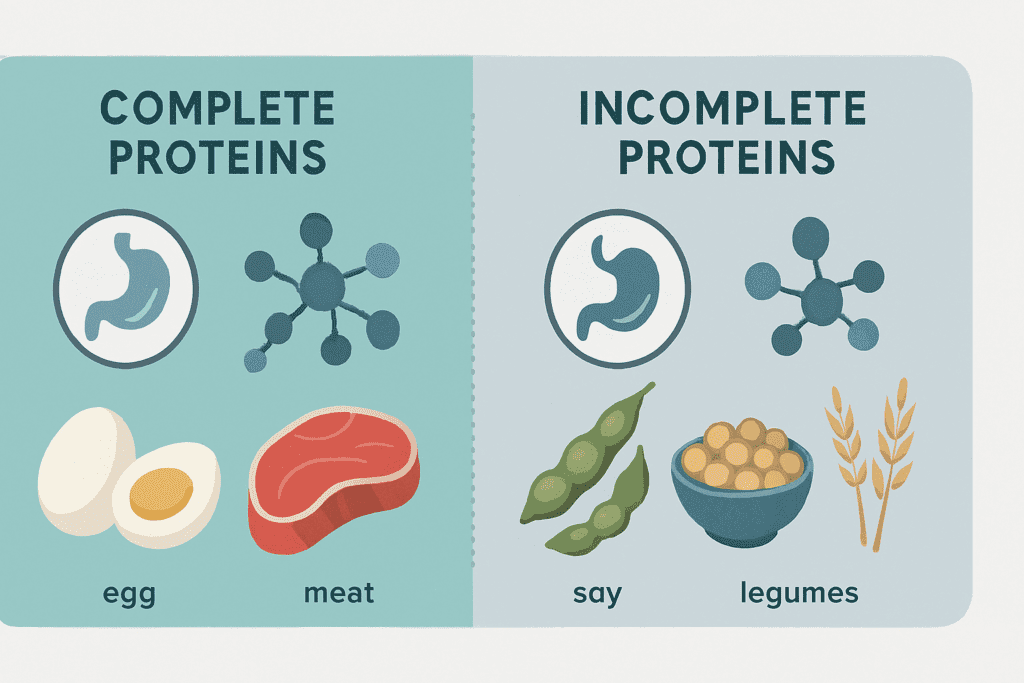
Protein Requirements and Quality in Human Diets
Understanding the quantity and quality of protein needed for health is a vital part of nutritional literacy. Protein needs vary by age, sex, physical activity level, and medical condition. The Recommended Dietary Allowance (RDA) for adults is 0.8 grams per kilogram of body weight per day, but this is considered a minimum for maintaining basic health. Athletes, older adults, and individuals recovering from illness or surgery often require more to support enhanced metabolic demands.
Protein quality also matters. Complete proteins contain all nine essential amino acids in adequate proportions and are typically found in animal-based foods such as eggs, dairy, poultry, and fish. Plant-based sources like legumes, nuts, and grains may lack one or more essential amino acids but can be combined to form complete profiles. When assessing dietary plans, professionals often consider bioavailability, digestibility, and amino acid composition to determine how well a protein source meets the body’s needs.
From a public health standpoint, addressing protein needs across populations involves more than simply encouraging higher intake. It includes improving access to quality sources, educating individuals on food pairing for completeness, and addressing misinformation that may deter people from certain protein-rich foods. These considerations extend the discussion of “Which of the following is a function of protein?” into the real-world application of nutritional science in policy, food systems, and clinical practice.
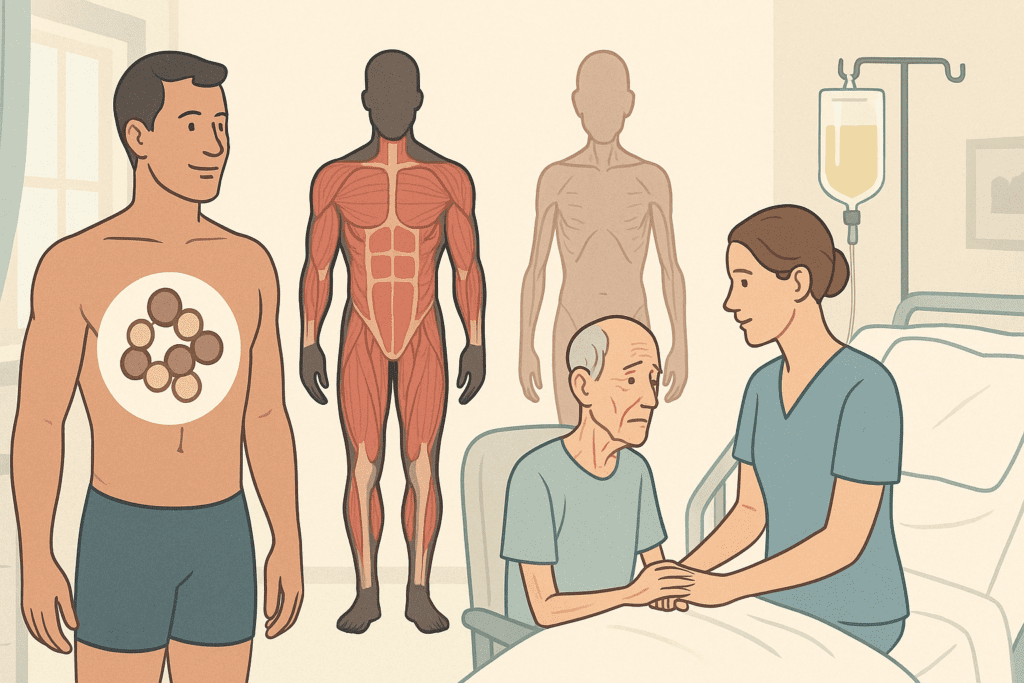
Proteins in Clinical Nutrition and Chronic Disease Management
Proteins play a central role in the prevention and management of chronic diseases, including sarcopenia, diabetes, cardiovascular disease, and certain cancers. In clinical nutrition, protein is often prioritized in hospital settings, where patients are at risk of muscle wasting, poor wound healing, and immune suppression. High-protein diets have also been shown to support weight loss, improve glycemic control, and reduce blood pressure when incorporated into comprehensive treatment plans.
In managing sarcopenia—the age-related loss of muscle mass and function—adequate protein intake is critical. Coupled with resistance training, higher protein consumption has been linked to improved strength, mobility, and independence in older adults. For individuals with type 2 diabetes, protein slows gastric emptying and promotes satiety, helping manage blood sugar spikes. These real-world examples provide actionable answers to the question, “Select all that are functions of proteins,” and illustrate the intersection of macronutrient science with disease prevention.
When Protein Intake Falls Short: Risks and Warning Signs
Protein deficiency, though relatively rare in developed nations, can have serious consequences when it occurs. Beyond kwashiorkor and marasmus, mild-to-moderate protein inadequacy can lead to fatigue, poor concentration, delayed wound healing, brittle nails, hair thinning, and muscle loss. In populations with limited food access, elderly individuals, and people with eating disorders, low protein intake may go undiagnosed until complications arise.
This raises critical concerns when addressing the full implications of the question, “Which of the following is a function of protein?” Because the symptoms of deficiency may be subtle at first, ongoing attention to dietary patterns is necessary. In medical practice, assessing serum albumin levels, lean body mass, and dietary recall are common strategies to evaluate protein status. Timely intervention with dietary counseling or supplementation can help reverse early signs of deficiency and restore wellness. These insights reinforce the essential nature of protein in maintaining both health and resilience across the lifespan.
Protein Myths and Misconceptions in Popular Culture
Despite its well-established scientific importance, protein is often misunderstood or misrepresented in popular discourse. Some diet trends promote excessive protein consumption without regard to balance or kidney health, while others downplay its significance in favor of carbohydrate-dominant philosophies. Clarifying the true roles of protein is critical not only for academic purposes but for empowering individuals to make informed dietary decisions.
The question, “Which of the following is a role of proteins?” can thus serve as an entry point to demystify these myths. Protein is not a miracle nutrient nor a dietary villain; it is a multifunctional molecule essential to human life. Understanding its true place in the nutrition hierarchy enables people to reject fads in favor of evidence-based practice. Health professionals play a key role in bridging this knowledge gap by delivering accurate, personalized guidance that honors both cultural food practices and metabolic needs.
FAQ: Exploring the Broader Impact and Function of Proteins in Human Health
1. Can protein intake influence mental health and cognitive function?
Yes, protein intake can significantly affect mental health and cognitive performance, particularly due to its influence on neurotransmitter production. Amino acids, the building blocks of protein, serve as precursors for neurotransmitters such as serotonin, dopamine, and norepinephrine—chemicals critical for regulating mood, attention, and emotional balance. For example, tryptophan is an amino acid that converts into serotonin, often referred to as the “feel-good” neurotransmitter. When discussing which of the following is a function of protein, many overlook its role in mental clarity and emotional regulation. By supporting neural communication and brain plasticity, protein plays a subtle but vital part in mental wellness, and its deficiency has been linked to increased risk of depression, brain fog, and even anxiety disorders.
2. How does protein consumption affect longevity and healthy aging?
Emerging research indicates that protein consumption, particularly when balanced and spread evenly throughout the day, can support healthy aging and extend lifespan. One key factor is its role in preserving muscle mass, which naturally declines with age, leading to frailty and reduced independence. Furthermore, proteins support mitochondrial health and cellular repair, processes that degrade over time but are essential to longevity. When asked, “Which of the following is a role of proteins?” the answer extends far beyond repair and into longevity science. Notably, protein’s involvement in autophagy and antioxidant enzyme support may contribute to delayed aging and lower the risk of chronic diseases in older adults.
3. Is protein equally important for sedentary individuals as it is for athletes?
Yes, though the context of use may differ. While athletes often require increased protein to support muscle repair and performance, sedentary individuals still depend on protein for maintaining immune health, skin elasticity, and organ function. Even in the absence of physical strain, the body continuously undergoes tissue turnover and metabolic regulation, both of which depend on proteins. Therefore, when evaluating which of the following is a function of protein, it’s essential to include roles like enzyme regulation and hormonal balance, which apply universally. Neglecting protein can lead to subclinical deficiencies that manifest as fatigue, weakened immunity, or slower recovery from minor illnesses—even in non-athletic populations.
4. What are the long-term risks of excessive protein consumption?
While protein is essential, chronic overconsumption—particularly from processed or animal-based sources—may contribute to health risks when not balanced with other nutrients. High intake of red and processed meats has been linked to increased risks of cardiovascular disease and certain cancers. Excess protein can also strain kidney function, particularly in individuals with pre-existing kidney conditions. In light of these concerns, answering “Select all that are functions of proteins” must also come with a caveat: more is not always better. Optimal protein consumption is about quality, variety, and appropriate quantity, and long-term wellness relies on maintaining that balance rather than fixating on macronutrient dominance.
5. How does protein interact with other nutrients in a healthy diet?
Proteins don’t operate in isolation—they work synergistically with carbohydrates, fats, vitamins, and minerals. For instance, the presence of carbohydrates can enhance protein absorption post-exercise, while vitamin B6 is required for amino acid metabolism. Additionally, zinc and iron, which are often found in protein-rich foods, support immune function and oxygen transport. When considering which of the following is a role of proteins, it’s important to see their functionality within the broader nutritional ecosystem. This interconnectedness emphasizes the importance of dietary diversity and reinforces that protein’s benefits are optimized when paired thoughtfully with other essential nutrients.
6. Are plant-based proteins as effective as animal-based proteins for building muscle?
While animal proteins generally offer a more complete amino acid profile, recent studies have shown that with proper planning, plant-based proteins can be equally effective for muscle building. Foods like quinoa, soy, and buckwheat contain all essential amino acids, while combining legumes with grains (such as rice and beans) also achieves completeness. When discussing which of the following is a function of protein, muscle synthesis remains a core topic—but it’s not exclusive to meat consumption. Athletes and individuals following plant-based diets can optimize muscle growth by focusing on protein variety, timing, and adequate overall intake, demonstrating that quality is not solely defined by animal origin.
7. How does protein influence hormonal balance, especially in women?
Protein plays a vital role in maintaining hormonal balance, particularly in regulating appetite hormones like ghrelin and leptin, as well as reproductive hormones such as estrogen and progesterone. Inadequate protein intake can disrupt menstrual cycles, contribute to infertility, or exacerbate symptoms of hormonal disorders like PCOS. Conversely, balanced protein consumption has been linked to improved satiety, better blood sugar control, and more stable moods. This offers a deeper perspective on which of the following is a role of proteins, beyond the common emphasis on physical performance. For women navigating hormonal transitions—whether due to puberty, pregnancy, or menopause—protein becomes a powerful ally in managing physiological stability.
8. Can protein help in healing after surgery or trauma?
Absolutely. Post-operative recovery and wound healing heavily rely on proteins to support tissue regeneration, immune function, and inflammation modulation. Specific amino acids, like arginine and glutamine, are particularly useful in enhancing collagen synthesis and cellular repair mechanisms. When considering how to “select all that are functions of proteins,” their restorative role in post-trauma care is especially critical. Hospitals frequently administer high-protein nutritional support to accelerate recovery and reduce the risk of complications. This application illustrates that protein isn’t just about wellness maintenance—it also plays an active role in acute medical treatment and rehabilitation.
9. What innovations are shaping the future of protein consumption?
The future of protein nutrition is being reshaped by innovations such as lab-grown meat, precision fermentation, and enhanced plant-based blends. These alternatives aim to provide high-quality proteins with reduced environmental impact and greater accessibility. Additionally, personalized nutrition powered by genetic and microbiome testing is starting to tailor protein recommendations to individual metabolic profiles. With these advancements, discussions around “which of the following is a function of protein” may evolve to include sustainability and individualized health metrics. As technology and nutritional science intersect, we may soon see protein sources that are optimized not just for human biology, but also for global well-being.
10. How do social and cultural factors affect protein choices and health outcomes?
Protein consumption is deeply influenced by cultural beliefs, economic status, and access to food. For instance, some populations may favor plant-based proteins due to religious or ethical reasons, while others prioritize meat as a symbol of prosperity. In low-income regions, protein deficiency is often a reflection of systemic inequality rather than individual dietary choice. Exploring which of the following is a role of proteins requires understanding not only biological facts but also social determinants of health. Addressing these disparities through public policy, food education, and equitable access is essential for ensuring that the benefits of protein nutrition reach all communities fairly and effectively.
A Final Word on the Essential Nature of Protein
So, which of the following is a function of protein? The answer, it turns out, is all of the above—and more. From providing structural support and catalyzing chemical reactions to transporting oxygen and defending against pathogens, proteins perform countless critical tasks that underpin life itself. When asked to select all that are functions of proteins, one must consider the vast web of biological activities they influence, directly or indirectly.
Understanding these diverse roles deepens our appreciation of the nutritional choices we make daily. Whether through meals crafted with care or clinical interventions guided by science, supporting optimal protein intake is fundamental to wellness at every stage of life. As our knowledge of protein continues to expand through research and innovation, so too does our ability to use this macronutrient strategically—not just to survive, but to thrive. In the end, the function of protein is nothing less than the function of life itself.
Further Reading:
9 Important Functions of Protein in Your Body
What Does Protein Do? A Guide to This Essential Nutrient
8 Significant Functions Of Protein In Your Body


